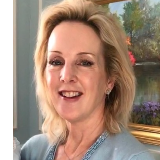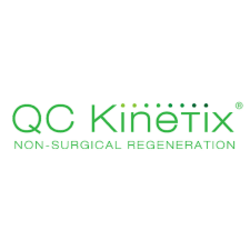Do you suffer from leg vein problems? You are not alone. Millions worldwide suffer from venous diseases such as varicose veins and spider veins. These conditions can cause discomfort, pain, and even severe health complications. Fortunately, modern medical treatments offer several effective options for treating venous leg problems. However, choosing the proper treatment can be tricky since many factors must be considered.
This article will discuss the most common venous leg problems. We will explore modern treatment options to help you make an informed decision.
Understanding leg vein problems
Before we dive into the various modern treatment options, it is crucial to understand what leg vein problems are. Leg vein problems can occur when the veins in the legs do not function properly. This malfunction can cause blood to pool in the legs and lead to varicose and spider veins. If you suffer from either of these conditions, consult a vein doctor. They can diagnose and treat your disease with the latest techniques.
Risk Factors
Several factors can contribute to venous leg problems, including:
- Family history
- Age
- Pregnancy
- Obesity
- Sedentary lifestyle
Symptoms
Problems in the veins of the legs can cause a variety of symptoms, some of which may include:
- Swelling. Leg vein problems can cause swelling in the affected area. It may be mild or severe and accompanied by a feeling of heaviness or discomfort in the leg.
- Cramps. Leg cramps are a common symptom of venous problems in the legs. They can occur at any time but are more frequent at night.
- Pain. Pain in the affected leg is a common symptom of venous leg problems. It can range from a mild ache to a sharp, stabbing pain.
- Skin changes. Venous leg problems can cause changes in skin texture and color. People may have discoloration, thickening, and dryness in the affected leg.
If you experience any of these symptoms, it is essential to consult a healthcare professional. They will be able to answer your questions, and you will be able to get an accurate diagnosis.
Common Leg Vein Diseases
Before diving into treatment options, let’s look at the three most common leg vein problems.
Varicose veins
Varicose veins are dilated, twisted, bulging veins that usually appear on the legs and feet. These veins form when blood flow is restricted. This causes blood to pool in the veins, resulting in swelling and inflammation.
Symptoms of varicose veins include pain, discomfort, heaviness, itching, and restless legs. In severe cases, varicose veins can cause skin ulcers or deep vein thrombosis.
Spider veins
Spider veins are tiny veins that appear on the surface of the skin. They are usually red or blue and may resemble tree branches or spider webs. Spider veins are generally harmless but can be a cosmetic problem for some people.
Deep Vein Thrombosis (DVT)
Deep vein thrombosis (DVT) occurs when a blood clot forms in the deep veins of the legs. DVT can cause pain, swelling, and redness in the affected leg. If left untreated, DVT can lead to severe complications, such as a pulmonary embolism (blood clot in the lungs).
Traditional Treatment Options
There are several traditional treatment options for venous leg disease. Some of the most common are:
Compression stockings
Compression stockings are special stockings that put pressure on the legs. They help improve blood flow and reduce swelling. Compression stockings are commonly used to treat varicose veins and DVT. They come in different sizes, lengths, and compression levels.
Sclerotherapy
Sclerotherapy is a minimally invasive procedure used to treat spider and varicose veins. The process involves injecting a solution directly into the affected vein, causing it to collapse and eventually fade. Sclerotherapy is a relatively quick and painless procedure that does not need anesthesia.
Vein stripping
Vein stripping is a surgical procedure that removes the affected leg veins. Vein stripping is usually performed as an outpatient procedure and needs general or local anesthesia. Recovery time varies from person to person. But most can resume normal activities within a few weeks.
Phlebectomy
Phlebectomy is a surgical procedure that involves removing smaller varicose veins. The doctor makes small incisions in the leg to remove the affected veins. The incisions are usually so small that no stitches are required, and scarring is minimal. Phlebectomy is generally performed as an outpatient procedure under local anesthesia. The patient can return home on the same day.
These treatments can be used alone or in combination. It will depend on the severity and type of the patient’s venous disease.
Modern treatment options for venous leg problems
Now, let’s explore modern treatment options. Many treatments can help with your venous leg problems. The best choice for you will depend on the type and severity of your issues. Some of the more modern treatments are:
Endovenous laser ablation (EVLA)
Endovenous laser ablation (EVLA) is a minimally invasive procedure for treating varicose veins. The process is simple: a tiny laser fiber is inserted into the affected vein, and the heat from the laser seals the vein. EVLA is a safe and effective treatment that does not need general anesthesia.
Radiofrequency Ablation (RFA)
Radiofrequency ablation (RFA) is a minimally invasive procedure for treating varicose veins. The process involves inserting a catheter into the affected vein, which emits radiofrequency energy to seal the vein. RFA is a safe and effective treatment that does not need general anesthesia.
VenaSeal Closure System
VenaSeal is a treatment that involves injecting medical adhesive into the affected vein. This causes it to close, and blood flow is redirected to healthy veins. VenaSeal is typically used to treat larger varicose veins and has a high success rate. It’s minimally invasive, so it’s not too painful or complicated.
Foam sclerotherapy
Foam sclerotherapy is a non-surgical procedure used to treat varicose veins. It involves injecting a foam solution into the affected veins to close them. The foam is injected into the affected veins with a small needle. Once injected, the foam solution causes the vein walls to stick together. This effectively closes the vein and diverts blood flow to healthier veins.
Foam sclerotherapy is often used to treat larger varicose veins that do not respond as well to traditional sclerotherapy. It is usually performed outpatient and lasts 30 to 60 minutes. The procedure is generally well tolerated and has a low risk of complications.
Some treatments may not be suitable for everyone. Thus, you must consult a healthcare professional to determine the best treatment.
Frequently Asked Questions
Q: How do I know which treatment option is right for me?
A: The right treatment option for you will depend on your disease’s severity, medical history, and personal preferences. Your doctor can help you choose the best option based on your needs.
Q: Is there any downtime associated with these treatments?
A: In most cases, there is little or no downtime associated with these treatments. You can usually resume your normal activities immediately after the procedure.
Q: Does insurance cover these treatments?
A: Often, these treatments are covered by insurance. However, checking with your insurance company to find out what is covered is essential.
Q: Are these modern treatments painful?
A: These treatments are associated with minimal pain and discomfort. Your doctor can provide more information about what to expect during and after the procedure.
Conclusion
Good news! If you have leg vein problems, many modern treatments can help you feel better. These treatments include options like endovenous laser and foam sclerotherapy. The treatment choice that is right for you will depend on the severity of your condition.
Remember that only a vein specialist can diagnose and treat your condition. So don’t hesitate to take action and explore your options. With the proper treatment and provider, you can feel confident and comfortable in your skin.








